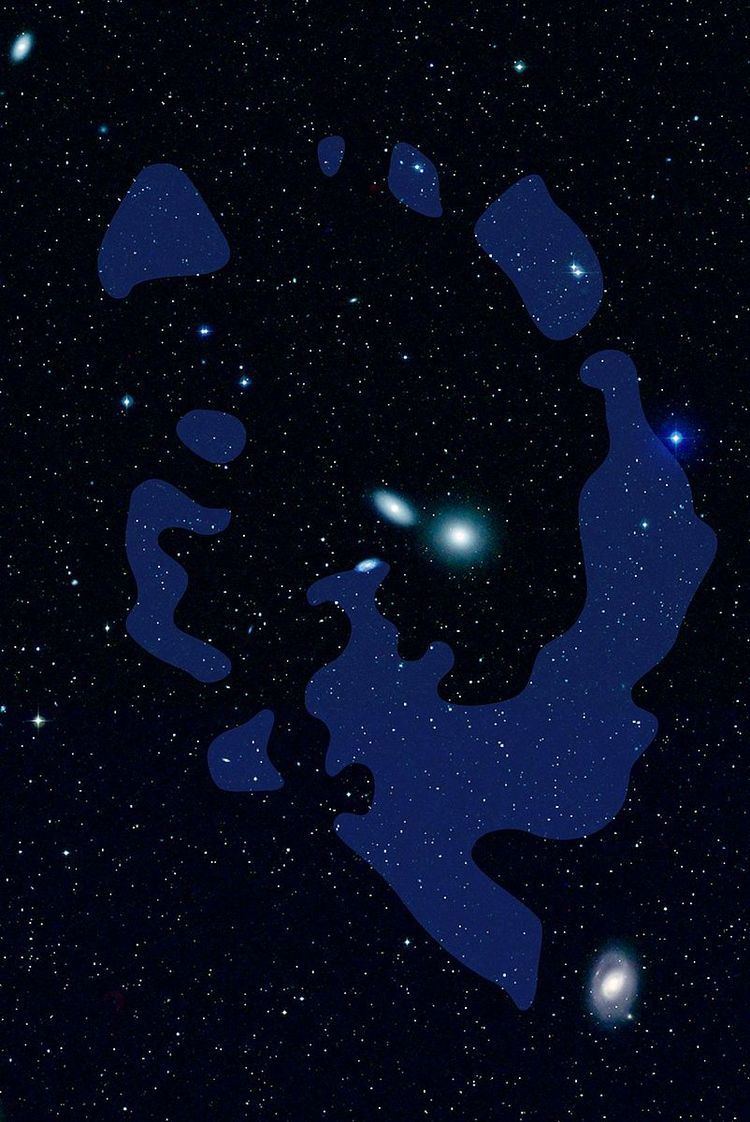Right ascension 10 48 19.0 | Declination +12° 41′ 21″ | |
 | ||
Distance 38±4.6×10 ly (11.8±1.4×10 pc) Radius 325×10 ly (100×10 pc) | ||
The Leo Ring is an immense intergalactic cloud of hydrogen and helium gas some 650 kilolight-years (200 kpc) in diameter, in orbit of two galaxies, in the center of the Leo Group of galaxies, within the constellation of Leo.
Contents
Observation history
Radio astronomers discovered the cloud in 1983. Astronomers had theorized that the ring was primordial gas in the process of forming a galaxy. The GALEX satellite detected ultraviolet emissions that astronomers at Johns Hopkins University and the Carnegie Institution for Science interpret to indicate star creation in newly forming dwarf galaxies in a 19 February 2009 Nature paper. In 2010, it was found that the gas was not primordial, but the result of a galactic collision between the two galaxies the ring is closely associated with.
Formation history
A billion years ago, NGC 3384 collided with M96, at the heart of the Leo Group, expelling a galaxy's worth of gas into intergalactic space. This gas gathered into a vast set of clouds, the Leo Ring.
The two galaxies have now drifted to being 38 Mly (12 Mpc) apart, and the ring is now 650 kilolight-years (200 kpc) wide. The ring is composed of a collection of H I regions. A bridge of gas connects the ring to M96.
